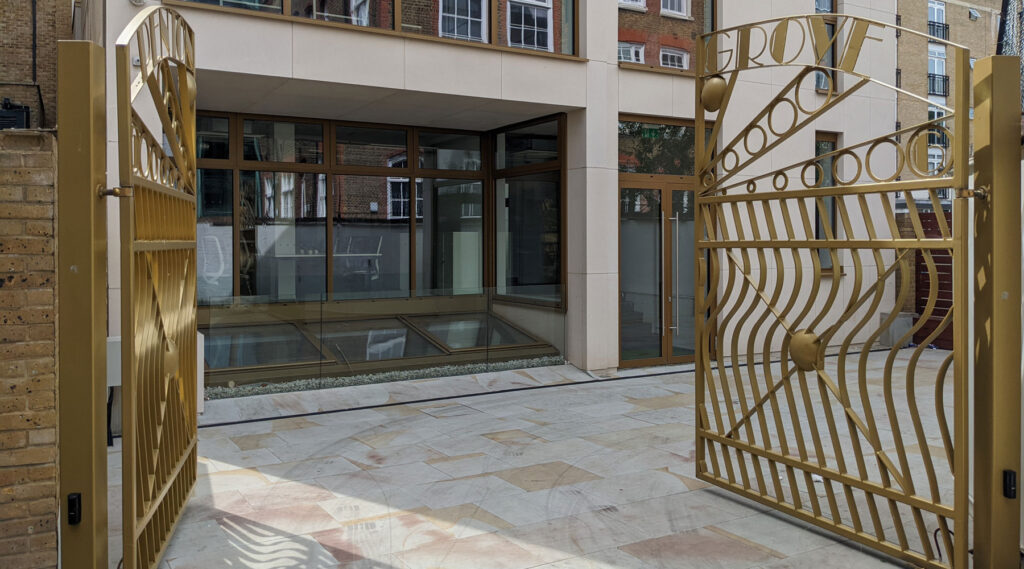This is a tiny stump of an alley to be found in Islington that used to be much longer than it is today. Penton Grove leads off White Lion Street, which is named after the former White Lion inn on the corner with Islington High Street. Penton Grove, as with the wider Pentonville area is named after Henry Penton, the developer of the area in the 1770s.
There’s a curious oddity in the history of the area, as a Penton Grove just about shows up on a map in 1799, but it’s the next alley along, not the one that’s today called Penton Grove. The current Penton Grove used to be called Dobneys Place, as it was built on the former Dobney’s tea gardens and bowling greens.
By the late 19th-century, the layout of the streets has changed, and Penton Grove is now a U-shaped alley running around a large school building that was built in 1900 on the site of an earlier school from 1874.
There’s a huge plaque on the side of the former school, with SLB White Lion Street — and the SLB stands for the School Board for London, which provided education across inner London between 1870 and 1904, when its powers were transferred to the London Council Council. The school closed in 1993 and was for a while part of the New River College, but was refurbished in 2011 and is now Lift, a youth venue.
The layout changed again in the post war years, to roughly how it is today, with Penton Grove cut back to a short back alley, and at the time still lined with a small furniture factory and timber yard.
There used to be a large 1970s warehouse building on the corner of Penton Grove and White Lion Street formerly occupied by The Wholesale Lighting and Electrical Company, which moved to the corner of the road and is still there, albeit owned by Ryness now. After a few years as a discount furniture outlet, the warehouse building was demolished in 2012, and is now the Doubletree hotel.
At the far end of the alley used to be a small warehouse building, that was in the 1990s, a costume studio, and seemed to have regular clothing sales judging by how often they advertised in The Stage newspaper at the time. More recently, the back of the alley got cut off with a new gate as a former office block that used to have its back facing the alley was demolished and replaced with a block of flats. The end of the alley is now a private car park for the flats.
Over the centuries, a long curved alley has slowly shrunk bit by bit to the little stump we have left today.











Why gave you stopped sending me emails?